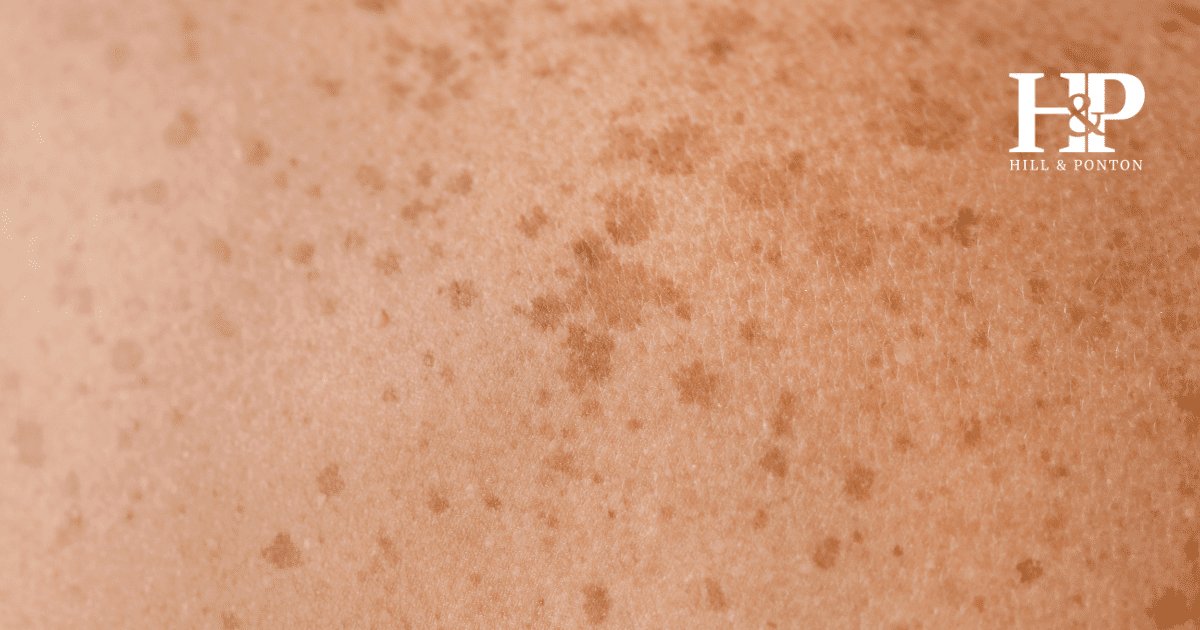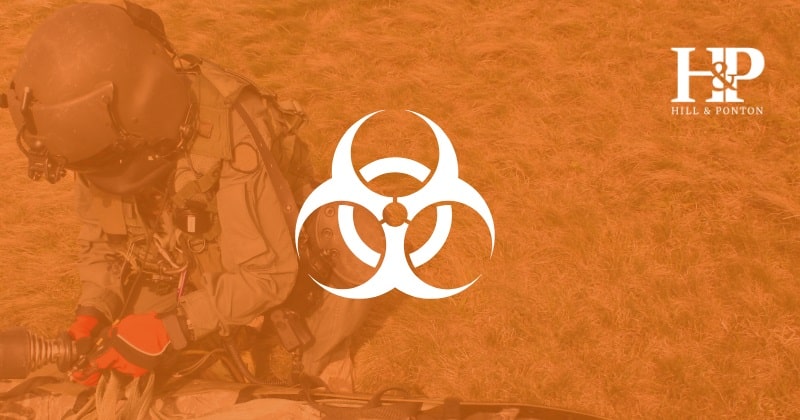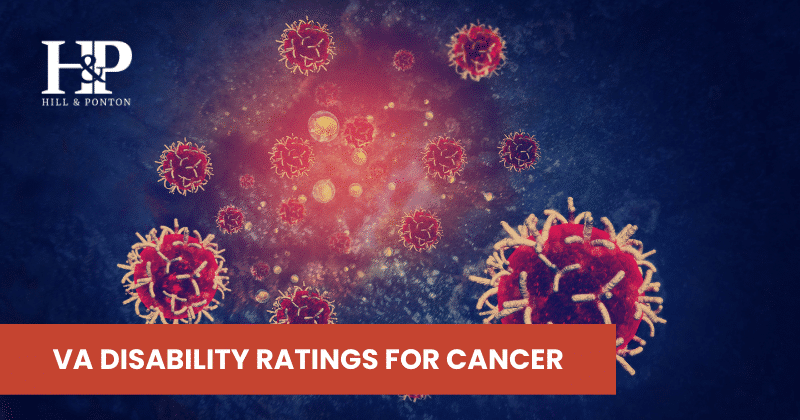Exposure to Agent Orange during military service has long been associated with significant health risks. While skin cancer is not classified as a presumptive condition by VA, studies suggest a possible connection between Agent Orange exposure and certain types of skin cancer. Learn about melanoma cancer and other skin cancers potentially linked to Agent Orange, VA disability ratings, and how veterans can strengthen their claims.
What Agent Orange Skin Cancers Does VA Recognize?
Agent Orange and Melanoma Cancer
Melanoma, a severe form of skin cancer, has been examined in connection with Agent Orange. Research, including studies published in JAMA Surgery and Plastic and Reconstructive Surgery, indicates that veterans exposed to Agent Orange exhibit higher rates of melanoma compared to the general population.
Agent Orange and Basal Cell Carcinoma
Basal cell carcinoma (BCC), the most common non-melanoma skin cancer, has also been linked to Agent Orange exposure. Veterans exposed to Agent Orange, particularly those involved in spraying herbicides, have shown a higher incidence of BCC, according to research.
Agent Orange and Squamous Cell Carcinoma
Squamous cell carcinoma, another type of non-melanoma skin cancer, has been reported among veterans exposed to Agent Orange. Although not presumptively linked, cases involving SCC can still be connected through direct service connection.
Which Other Skin Cancers Can Agent Orange Cause?
Veterans have also reported other skin cancers, such as nonmelanotic invasive skin cancer. While these are not presumptively linked, veterans can still file claims by demonstrating a direct connection between their cancer and military service.
To learn more about skin conditions and ratings, visit our guide here →
VA Disability Ratings for Skin Cancer
Can Agent Orange-Caused Skin Cancer Be Assigned a 100% VA Rating?
Yes. Veterans with active or recurring skin cancer that requires therapy like other cancers (chemo, radiation, etc.) may qualify for 100% disability rating during treatment or while the cancer is still active. Six months post-remission, VA assigns ratings based on the residual effects of the condition, such as disfigurement, scarring, or functional limitations.
Otherwise, the malignancy is rated as a burn. Diagnostic Code 7800: Burn scar(s) of the head, face, or neck; scar(s) of the head, face, or neck due to other causes; or other disfigurement of the head, face, or neck:
- 80% – With visible or palpable tissue loss and either gross distortion or asymmetry of three or more features or paired sets of features (nose, chin, forehead, eyes (including eyelids), ears (auricles), cheeks, lips), or; with six or more characteristics of disfigurement
- 50% – With visible or palpable tissue loss and either gross distortion or asymmetry of two features or paired sets of features (nose, chin, forehead, eyes (including eyelids), ears (auricles), cheeks, lips), or; with four or five characteristics of disfigurement
- 30% – With visible or palpable tissue loss and either gross distortion or asymmetry of one feature or paired set of features (nose, chin, forehead, eyes (including eyelids), ears (auricles), cheeks, lips), or; with two or three characteristics of disfigurement
- 10% – With one characteristic of disfigurement
Active Cancer Ratings
Veterans undergoing treatment for active skin cancer may receive a 100% disability rating. This rating continues until six months after treatment ends and the condition is reevaluated.
Residual Cancer Ratings
Once the cancer is in remission, VA assigns ratings based on long-term effects:
- 30%: Skin conditions affecting 20-40% of the body or requiring systemic therapy for a total of six weeks or more.
- 10%: Skin conditions affecting 5-20% of the body or requiring systemic therapy for less than six weeks.
- 0%: Skin conditions treated with topical therapy and affecting less than 5% of the body.
For scars resulting from skin cancer treatment, VA evaluates them based on size, location, and disfigurement. Scars on the face, head, or neck may receive higher ratings due to cosmetic and functional impacts. Learn more about scar ratings here →
Connecting Agent Orange Exposure to Skin Cancer
While skin cancer is not currently on the VA’s list of conditions presumptively linked to Agent Orange exposure, veterans may still pursue a disability claim for skin cancer related to Agent Orange through a process called “direct service connection.”
This requires demonstrating a clear link between skin cancer and service-related Agent Orange exposure. To do so, veterans must demonstrate the following:
- Current Diagnosis: A confirmed medical diagnosis of skin cancer. This requires official medical documentation of the specific type of skin cancer.
- Evidence of Agent Orange Exposure: Documentation of service in locations and timeframes associated with Agent Orange use. This includes service records, such as DD214s, showing service in Vietnam (including its inland waterways and 12 nautical mile territorial sea from January 9, 1962, to May 7, 1975), or other qualifying locations and timeframes.
- Medical Nexus: The most important element is a “nexus opinion” from a qualified medical professional stating that it is “at least as likely as not” that the veteran’s skin cancer is related to their Agent Orange exposure. This medical opinion must provide a well-reasoned explanation of the connection, considering things like relevant studies, time between exposure and onset, individual risk factors and other potential causes.
- Lay Evidence: Personal testimony from the veteran and statements from others (family, fellow service members) who can describe the veteran’s health and potential exposure can be valuable supporting evidence. This could include descriptions of skin changes or health issues noticed around the time of or after service.
Note on VA’s Duty to Assist: The VA has a “duty to assist” veterans in gathering evidence. This may include providing a medical examination. However, it’s strongly recommended that veterans proactively seek a private medical opinion linking their skin cancer to Agent Orange exposure. A favorable private medical opinion can significantly strengthen a claim.
Other Important Considerations:
- Benefit of the Doubt: If the evidence is equally balanced, the VA must give the benefit of the doubt to the veteran.
- Affirmative Evidence: The VA can deny a claim if they find “affirmative evidence” that the skin cancer was caused by something other than Agent Orange.
- Metastasis: If a veteran has a non-presumptive cancer (like skin cancer) that metastasizes, separate service connection is not required for the metastasized cancer.
By following these steps and providing compelling medical and lay evidence, veterans can pursue a service connection for skin cancer related to Agent Orange exposure, even though it is not a presumptive condition.
Case Example: Proving Service Connection for Metastatic Melanoma Due to Agent Orange Exposure
In this case, a Vietnam veteran who served from July 1966 to June 1968 was exposed to Agent Orange during their service in the Republic of Vietnam. The veteran passed away in 2005 due to metastatic melanoma, and the surviving spouse filed a claim for service connection for the cause of the veteran’s death.
Although melanoma is not listed as a presumptive condition for Agent Orange exposure, the spouse successfully proved that the veteran’s death was related to service.
How This Claim Was Won:
- Establishing Herbicide Exposure: The veteran’s service in Vietnam automatically established exposure to herbicides, including Agent Orange, under VA regulations. This foundation was critical for building the claim despite melanoma not being a presumptive condition.
- Medical Nexus Linking Agent Orange to Melanoma: Multiple medical opinions supported the connection between Agent Orange exposure and metastatic melanoma.
- Supporting Evidence from Family and Medical History: Statements from the veteran’s family members detailed the presence of lesions and bumps on the veteran’s face and neck after returning from Vietnam. These skin issues were consistent with chloracne, a condition linked to high dioxin exposure.
- Scientific Studies and Expert Opinions: The claim was bolstered by the inclusion of relevant studies, such as the Cancer in US Air Force Veterans of the Vietnam War, which showed an increased risk of malignant melanoma in veterans exposed to dioxin. Although the veteran was not part of Operation Ranch Hand (a cohort with the highest dioxin exposure), the Board found the studies applicable due to the veteran’s documented herbicide exposure.
- The Benefit of the Doubt Standard: When evidence was equally balanced, the Board applied the “benefit of the doubt” rule, resolving any uncertainty in favor of the surviving spouse.
The Board of Veterans’ Appeals concluded that the veteran’s death from metastatic melanoma was proximately due to dioxin exposure during their service in Vietnam. As a result, service connection for the cause of death was granted, ensuring the surviving spouse received benefits.
For further details, you can review the full case decision here.
Supporting Studies and Findings
Research has shown that Agent Orange exposure may increase the risk of certain types of skin cancer, even though skin cancer isn’t officially listed as a presumptive condition by the VA.
A pilot study published in Plastic and Reconstructive Surgery found that veterans exposed to Agent Orange had a much higher rate of nonmelanotic invasive skin cancer (51%) compared to the general population (23.8%). The study also linked higher cancer rates to veterans who actively sprayed herbicides or had chloracne, a condition tied to dioxin exposure.
JAMA Surgery looked at how these cancers behaved in veterans and found that lesions in those exposed to Agent Orange didn’t respond differently to treatment compared to those in unexposed individuals.
Additionally, the Journal of the American Academy of Dermatology highlighted various skin issues tied to dioxin exposure, such as chloracne and some types of lymphomas. Although the evidence for melanoma and nonmelanoma skin cancer is less clear, this research emphasizes the need to consider veterans’ service history when diagnosing and treating skin conditions.
Navigating VA disability ratings for skin cancer can be complex, especially when residual symptoms severely impact your quality of life. Ensuring your skin cancer VA claim reflects the full extent of your condition is key to securing the maximum rating. If you need help appealing a decision, our Agent Orange experienced lawyers are here to assist. Get a free case evaluation today →




